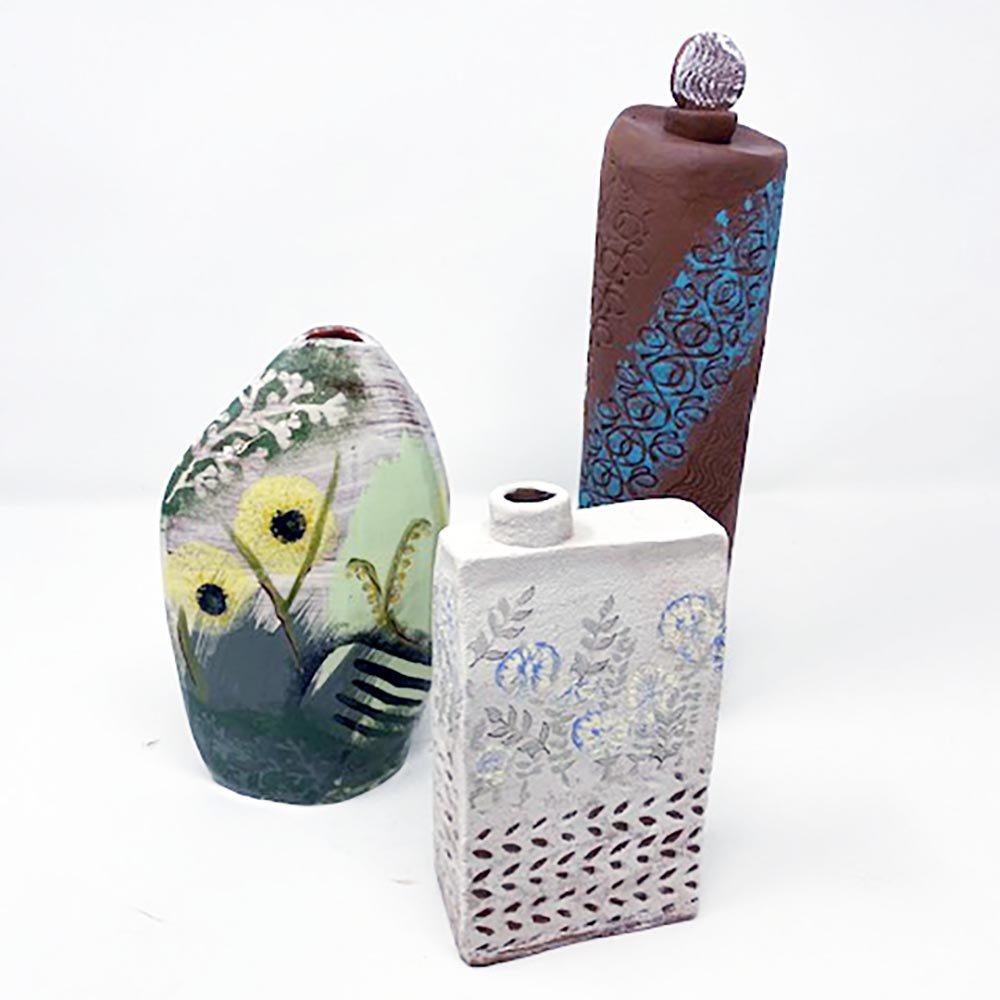Secrets of Slab Building .....
Tales of clay construction & consistancy
Jenny building a money box from clay slabs
Pottery has been made by hand for thousands of years. Clay is a unique material and the more you work with it, the better understanding of its properties you have.
Whilst clay has an amazing versatility, it also has its limitations when building forms. It can be too soft, too sticky, it can dry out too quickly, forms can collapse and they can warp and crack.
Jane Jones’ Bee Hotel
When working with clay you start to understand its limitations and possibilities and work with them to achieve your desired outcome.
Foundation handbuilding skills have changed little over the centuries. Slab building is one of the main skills. It is a versatile technique to build functional, decorative or sculptural work.
There are two main types of slabs you can work with, either soft slabs or firm leather hard slabs.
Working with slabs can be challenging. Soft slabs are flexible, allowing you to manipulate the clay into position, whereas leatherhard slabs are rigid requiring more precision with construction detail.
“I thoroughly enjoyed my session hand building. It was both calming and fun.
Gaye was a fantastic teacher, patient and very encouraging.
It was great that the class was small, giving lots of time for extra help!
Even if you think you are not creative I would definitely recommend giving one of the sessions a go!
Thanks so much for such an enjoyable morning. I look forward to collecting my finished pot”
Jenny rolling a slab with a cloth & guides
Developing competent skills for slab building and construction is about recognising and understanding the ideal condition that the clay needs to be in and is the foundation of successful construction.
The preparation of the clay, the rolling and handling of slabs to gain a consistent thickness is fundamental.
Drying the slab to the desired consistency is the next step; dry a soft slab out too much and it will break when you try to flex it, too soft and it will collapse.
If you want a firm leatherhard slab to work with, it needs longer drying, too dry it will snap/ crack, too wet it will fold and sag and not hold its shape.
Slabs ready for slurry and joining
Accurate cutting of slabs using templates sets you up for good joining. Joining slabs again is a fundamental skill for all pottery, ensuring the join is bonded you may have to mitre or trim the edges and two clay surfaces are always joined together by scoring the surfaces to be joined and applying slurry, which is liquid clay.
Once you have made your slab project, after care is very important as careful drying out is essential before it is bisque fired, reducing the risks of warping and cracking.
“The ceramics garden lantern workshop was an absolute joy.
Gaye was a brilliant teacher; I could not believe it was possible to complete the project in the time. The four lanterns were so different; a more bespoke experience than the more prescriptive approach that is often the case in craft projects.
This was solely down to Gaye’s expertise in ceramics and her friendly coaching style. I look forward to enjoying many more creative project day”
All these pots were created with the slab method
In our Handbuilding Classroom we focus on teaching the whole range of foundation handbuilding skills. Our slab building projects are suitable for beginners and for the more experienced potter. We teach you all the basic skills, secrets of good construction and decoration techniques. We do a wide range of slab projects including making tiles, plates, bird boxes, garden lanterns, mugs, vases just to mention a few and are always planning new projects.
Slab building can be very exciting, offering opportunities to build organic or geometric shapes and sizes, a whole host of functional possibilities - tiles, boxes etc and sculptural builds.
I love slab building, it’s all about understanding consistency and construction!
Gaye x






